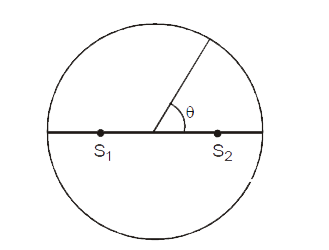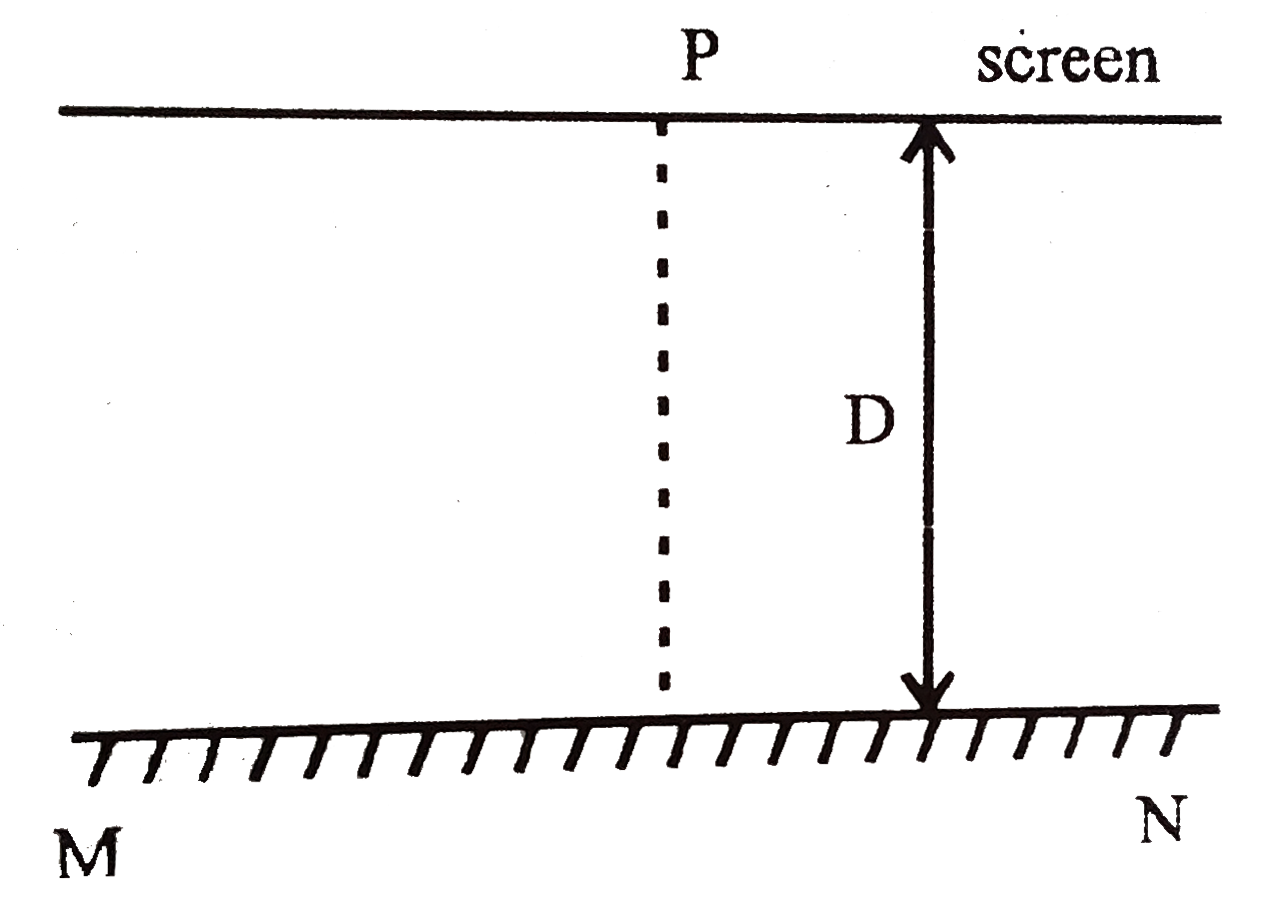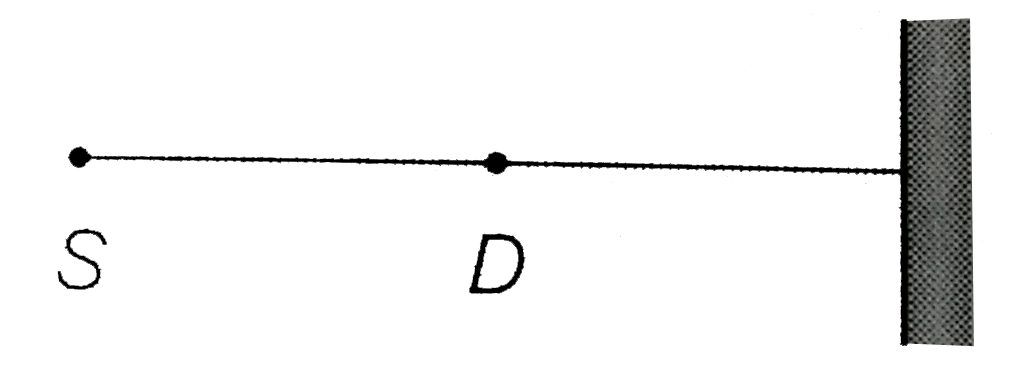In a closed tube whose length can be altered by sliding one of the halves relative to other is shown in the figure. In the initial condition the dector detects minimum intensity. One of the tubes is then displaced by 5 cm, during this displacement detector detects maximum intensity for 10 times and then a minimum intensity when the displacement is complete. what is the wavelength of sound?

10/9 cm
1 cm
1/2 cm
5/9 cm
The correct Answer is:B
Step by step video & image solution for In a closed tube whose length can be altered by sliding one of the halves relative to other is shown in the figure. In the initial condition the dector detects minimum intensity. One of the tubes is then displaced by 5 cm, during this displacement detector detects maximum intensity for 10 times and then a minimum intensity when the displacement is complete. what is the wavelength of sound? by Physics experts to help you in doubts & scoring excellent marks in Class 12 exams.
Updated on:21/07/2023Topper's Solved these Questions
Similar Questions
Two point sources of sound are placed at a distance d and a detector moves on a straight line parallel to the line joining the sources as shown in figure. At a distance D away from sources. Initially Detector is situated on the line so that it is equidistant from both the sources. Find the displacement of detector when it detects nth maximum sound and also find its displacement when it detects nth minimum sound.

View SolutionTwo point sources ofsound are placed at a distance d and a detector moves on a straight line parallel to the line joining the sources as shown in figure-6.27 at a distance D away from sources. Initially Detector is situated on the line so that it is equidistant from both the sources. Find the displacement of detector when it detects nth maximum sound and also find its displacement when it detects nth minimum sound.

View Solution
Knowledge Check
In Quincke's tube a detector detects minimum intensity. Now one of the tube is displaced by 5 cm. During displacement detector detects maximum intensity 10 times, then finally a minimum intensity (when displacement is complete). The wavelength of sound is :
A109 cmB1 cmC12 cmD59 cmA point is emitting light of wavelength 6000Å is placed at a very small height h above a flat reflecting surface MN as shown in the figure.The intensity of the reflected light is 36% of the incident intensity.Interference fringes are observed on a screen placed parallel to the reflecting surface at a very large distance D from it.

If the intensity at pbe maximum then the minimum distance through which the reflecting suface MN should be displaced so that at P again becomes a mixture.?A3×10−10mB6×10−10mC1.5×10−10mD12×10−10mA tuning fork vibrating with a frequency of 500 Hz is kept close to the open end of a tube filled with water, as shown in figure. The water level in the tube is gradually lowered When the water level is 17 cm below the open the open end, maximum intensity of sound is heard. If the room temperature is 20∘ C, the speed of sound in air at the temperature is
 A330ms−1B340ms−1C350ms−1D360ms−1
A330ms−1B340ms−1C350ms−1D360ms−1
In an experiment related to interference , Quinck's tube was employed to determine the speed of sound in air. A tunning fork of frequency 1328Hz was used as the sounding source . Initially , the apparatus , yielded a maximum sound intensity . Later , when the slidable tube was drawn by a distance of 12.5cm, the intensity was found to be maximum for the first time . Determine the speed of sound in air .
View SolutionA rod or length 2m starts to roll on a horizontal surface as shown in figure. At the same time an ant starts from one end of the rod to other and when the rod rools through a distance 10m the ant dreaches the other end (B). Calcualte the distance and displacement of the ant
(a) with respect to the rod
(b) with respect to the ground.
View SolutionA rod or length 2m starts to roll on a horizontal surface as shown in figure. At the same time an ant starts from one end of the rod to other and when the rod rools through a distance 10m the ant dreaches the other end (B). Calcualte the distance and displacement of the ant
(a) with respect to the rod
(b) with respect to the ground.
View Solution(a) A source of sound S and a detector D are placed at some distance from one another. A big cardboard is placed near the detector and perpendicular to the line SD as shown in figure. It is gradually moved away and it is found that the intensity changes from a maximum to a minimum as the board is moved through a distance of 20cm. Find the frequency of the sound emitted. Velocity of sound in are is 336m/s.

(b) A source emitting sound of frequency 180Hz is placed in front of a wall at a distance of 2m from it. A detector is also placed in front of the wall at the same distance from it. find the minimum distance between the source and the detector for which the detector detects a maximum of sound . Speed of sound in air =360m/s.
View SolutionThe displacement of the medium in a sound wave is given by the equation y1=Acos(ax+bt) where A, aandb are positive constants. The wave is reflected by an obstacle situated at x=0. The intensity of the reflected wave is 0.64 times that of the incident wave.
(a) What are the wavelength and ffrequency of incident wave?
(b) Write the equation for the reflected wave.
( c ) In the resultant wave formed after reflection, find the maximum and minimum values of the particle speeds in the medium.
(d) Express the resultant wave as a superposition of a standing wave and a travelling wave. what are the positions of the antinodes of the standing wave ? What is the direction of propagation of travelling wave?
View Solution
